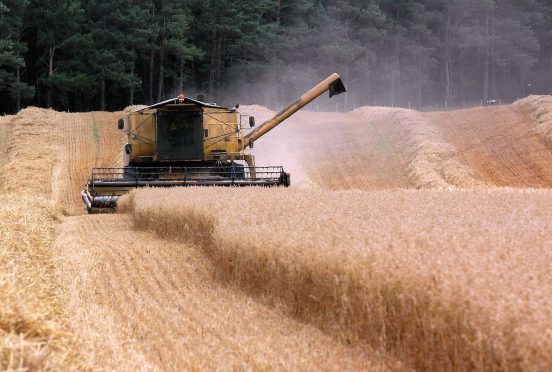Arable farmers could be in for another tricky season with production predicted to outstrip demand once more.
According to consultancy firm Andersons there is little scope for price improvements this season due to the large amount of carryover stocks from harvest 2015 across the world.
“Indeed, it may now require two successive lower global harvests to shrink stocks enough to boost prices. The current price range could continue through to harvest 2017,” said the company’s head of business research, Richard King.
“Profitability on UK cereal farms will remain under pressure in many cases and a fundamental reassessment of crop production systems may be required.”
Data from the company’s fictional 600-hectare (1,500-acre) Loam Farm, which the company has been using since 1991, suggests the farm, like many others, will make an overall loss this year.
Loam runs a simple rotation of milling wheat, oilseed rape, feed wheat and spring beans.
Andersons has predicted an output of £947 a hectare for harvest 2016, with margin from production at a loss of £187 a hectare. Once subsidy money has been accounted for – £176 a hectare – the fictional farm is predicted to make a loss of £10 a hectare.
Mr King said Loam had achieved good yields for harvest 2014 when prices, although the lowest in four years at the time, were higher than anything else achieved since then.
In 2015, record yields were offset by poorer prices to an extent and the overall result for the farm was a loss before subsidy money was accounted for.
“The 2016 harvest year is not projected to return such high yields – with less-than-ideal growing conditions so far,” said Mr King.
“Most agronomists agree some yield will have been lost by now, so long-term average yields have been projected for Loam Farm. Prices are forecast to remain flat and similar to the 2015 year – based on the current high grain stocks. Loam Farm is budgeted to make an overall loss for the 2016 harvest year. This is the first time since 2000.”
He said although the farm had made overhead savings of around £10 a hectare, this had not been enough to restore profitability.
“Loam Farm illustrates trends in arable returns but every farm is different and there is a vast range in business performance – driven largely by the quality of management. There are many areas the combinable cropping businesses can look at to improve performance,” added Mr King.
“Achieving high yields is a key element of reducing costs per tonne. Part of this is timeliness of operations and input use. However, longer-term issues of fertility, soil structure and weed burdens also play a role. Some parts of the farm, and, indeed, individual fields will be highly profitable, while others will generate losses. Are these latter areas known, and can remedial work improve their performance cost effectively? If not, would they be better off not being cropped?”
He said there was still scope for growers to take out costs in their businesses through increased co-operation and collaboration.
“During more profitable times the impetus for these can be lost. The current tougher conditions may spark renewed interest,” added Mr King.
